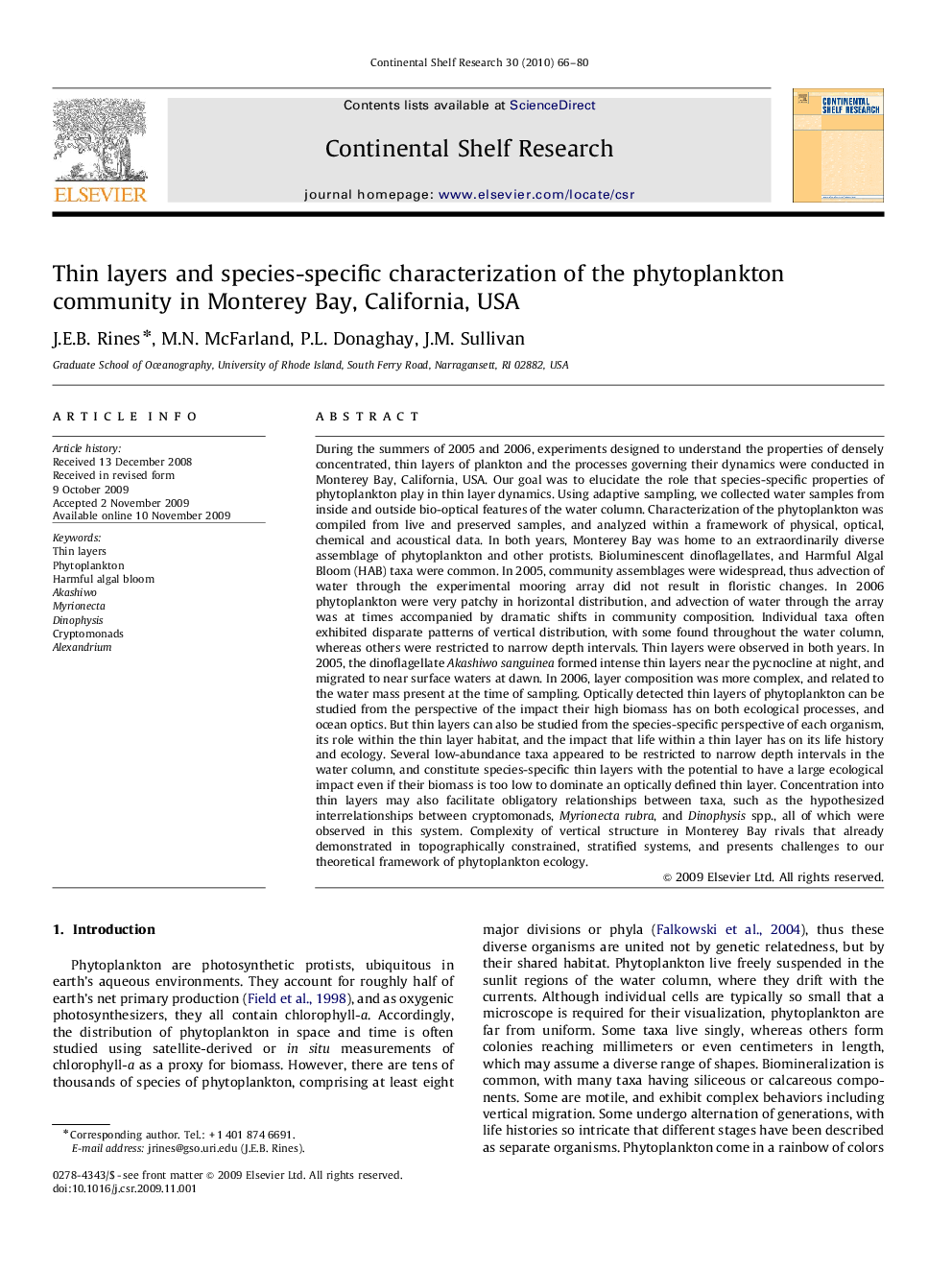| کد مقاله | کد نشریه | سال انتشار | مقاله انگلیسی | نسخه تمام متن |
|---|---|---|---|---|
| 4533265 | 1325179 | 2010 | 15 صفحه PDF | دانلود رایگان |

During the summers of 2005 and 2006, experiments designed to understand the properties of densely concentrated, thin layers of plankton and the processes governing their dynamics were conducted in Monterey Bay, California, USA. Our goal was to elucidate the role that species-specific properties of phytoplankton play in thin layer dynamics. Using adaptive sampling, we collected water samples from inside and outside bio-optical features of the water column. Characterization of the phytoplankton was compiled from live and preserved samples, and analyzed within a framework of physical, optical, chemical and acoustical data. In both years, Monterey Bay was home to an extraordinarily diverse assemblage of phytoplankton and other protists. Bioluminescent dinoflagellates, and Harmful Algal Bloom (HAB) taxa were common. In 2005, community assemblages were widespread, thus advection of water through the experimental mooring array did not result in floristic changes. In 2006 phytoplankton were very patchy in horizontal distribution, and advection of water through the array was at times accompanied by dramatic shifts in community composition. Individual taxa often exhibited disparate patterns of vertical distribution, with some found throughout the water column, whereas others were restricted to narrow depth intervals. Thin layers were observed in both years. In 2005, the dinoflagellate Akashiwo sanguinea formed intense thin layers near the pycnocline at night, and migrated to near surface waters at dawn. In 2006, layer composition was more complex, and related to the water mass present at the time of sampling. Optically detected thin layers of phytoplankton can be studied from the perspective of the impact their high biomass has on both ecological processes, and ocean optics. But thin layers can also be studied from the species-specific perspective of each organism, its role within the thin layer habitat, and the impact that life within a thin layer has on its life history and ecology. Several low-abundance taxa appeared to be restricted to narrow depth intervals in the water column, and constitute species-specific thin layers with the potential to have a large ecological impact even if their biomass is too low to dominate an optically defined thin layer. Concentration into thin layers may also facilitate obligatory relationships between taxa, such as the hypothesized interrelationships between cryptomonads, Myrionecta rubra, and Dinophysis spp., all of which were observed in this system. Complexity of vertical structure in Monterey Bay rivals that already demonstrated in topographically constrained, stratified systems, and presents challenges to our theoretical framework of phytoplankton ecology.
Journal: Continental Shelf Research - Volume 30, Issue 1, 15 January 2010, Pages 66–80